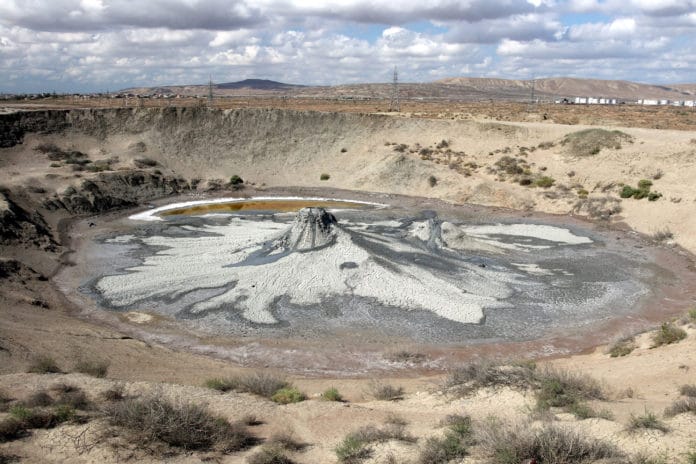Large outflow channels on ancient terrains of Mars have been interpreted as the products of catastrophic flood events. The rapid burial of water-rich sediments after such flooding could have led to sedimentary volcanism, in which mixtures of sediment and water (mud) erupt to the surface.
There are a huge number of these landforms on the Martian surface, often situated where there are massive channels scoured into the surface by ancient liquids flowing downstream.
These channels are incredibly long, expanding many hundreds of kilometers in length and typically more than dozens of kilometers wide. They are accepted to be the consequence of massive floods involving huge waterways equivalent to the largest ever known to have occurred on Earth. When the water seeps into the subsurface, it can develop again as mud.
A new study determined investigated the mechanisms of mud propagation on Mars using experiments performed inside a low-pressure chamber at cold temperatures.
The study by the European team of scientists simulated the development of mud on the outside of Mars.
The research was led by the Institute of Geophysics at the Czech Academy of Sciences. It involved Lancaster University, the Open University and the Rutherford Appleton Laboratory in the UK, CNRS in France, DLR, and Münster University in Germany, and CEED in Norway.
Scientists used Mars Chamber at the Open University. There, they recreated the surface temperature and atmospheric pressure on Mars as part of a simulation of conditions on both Earth and Mars.
Scientists conducted experiments in a vacuum chamber to simulate the release of mud on Mars.

Lionel Wilson, Emeritus Professor of Earth and Planetary Sciences at Lancaster University, said, “This is of interest because we see many flow-like features on Mars in spacecraft images, but they have not yet been visited by any of the roving vehicles on the surface, and there is some ambiguity about whether they are flows of lava or mud.”
To recreate the Martian environment, scientists performed their experiments, especially at low pressure and at extremely cold temperatures (-20°C). They found that free-flowing mud under Martian conditions behaves differently from on Earth. The reason is rapid freezing and the formation of an icy crust. This is because water is not stable and begins to boil and evaporate. The evaporation removes latent heat from the mud, eventually causing it to freeze.
Under Martian conditions, the experimental mud flows formed similar shapes to “pahoehoe” lava frequently occurring on Hawaii or Iceland on Earth, which cools down to form smooth undulating surfaces. In the experiment, this happened when liquid mud spilled from ruptures in the frozen crust, then refroze.
However, under terrestrial atmospheric pressure, the experimental mudflows did not form lava shapes, did not expand, and had no icy crust, even under very cold conditions.
This “sedimentary volcanism” has also been proposed for the dwarf planet Ceres which lies in the asteroid belt between Mars and Jupiter and may have a muddy water ocean beneath an icy crust.
Dr. Petr Brož, the leading author of the study, said: “We suggest that mud volcanism can explain the formation of some lava-like flow morphologies on Mars and that similar processes may apply to eruptions of mud on icy bodies in the outer Solar System, like on Ceres.”
Journal Reference:
- Petr Brož, Experimental evidence for lava-like mud flows under Martian surface conditions. DOI: 10.1038/s41561-020-0577-2
